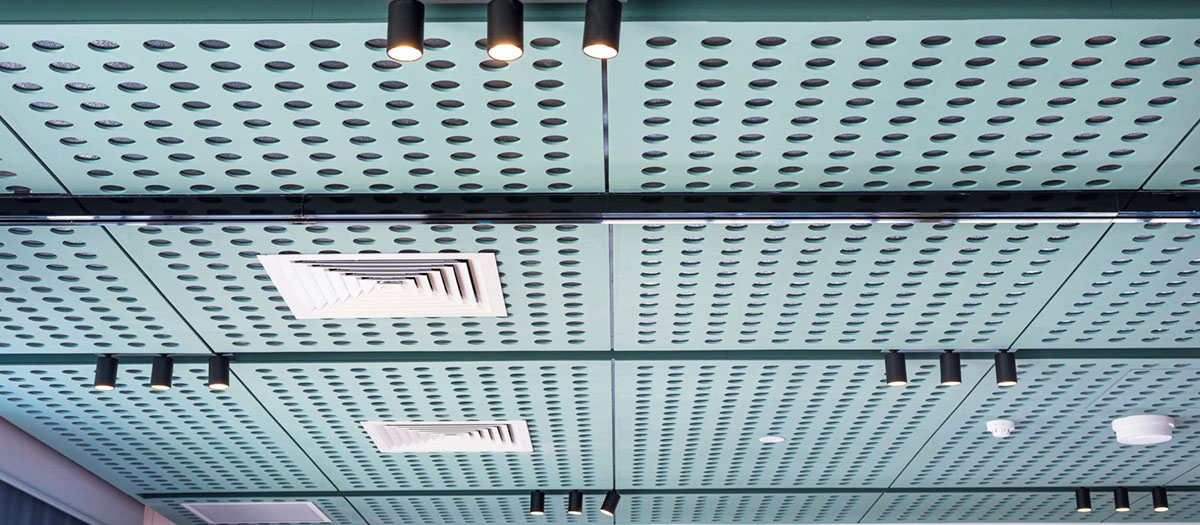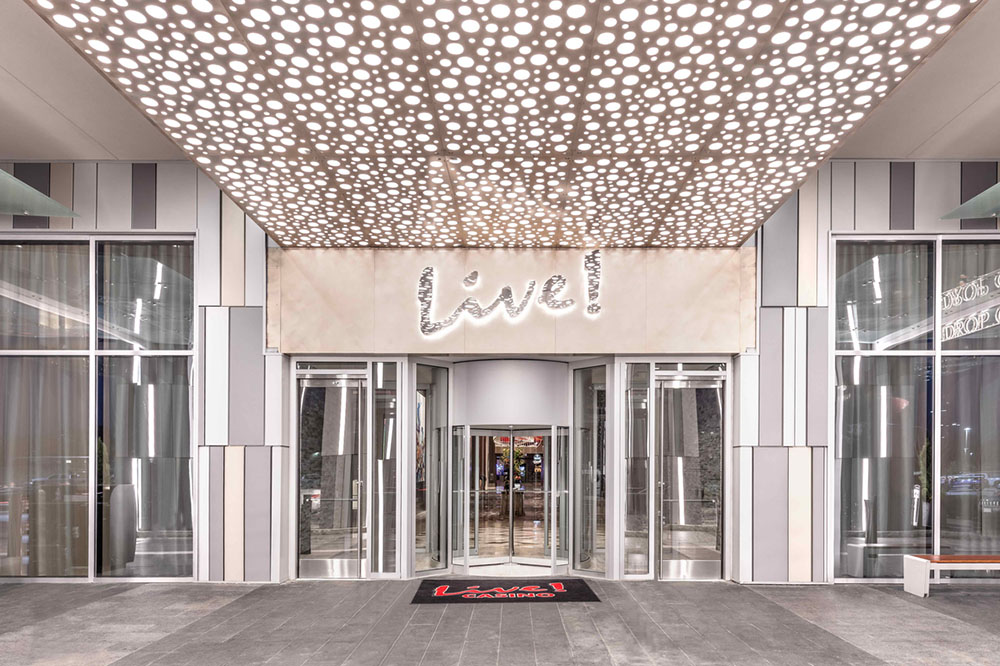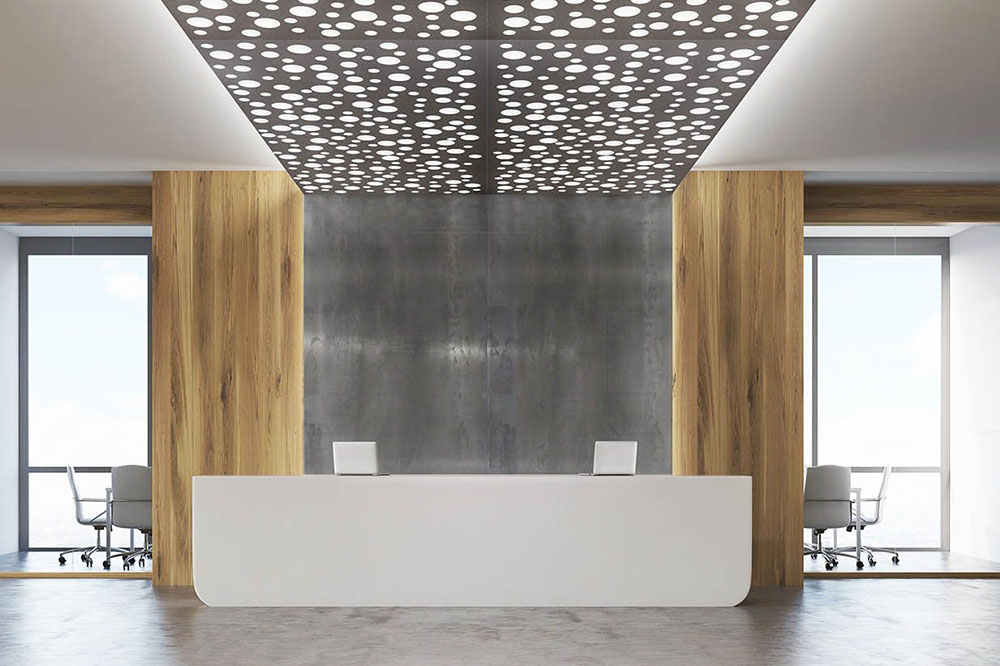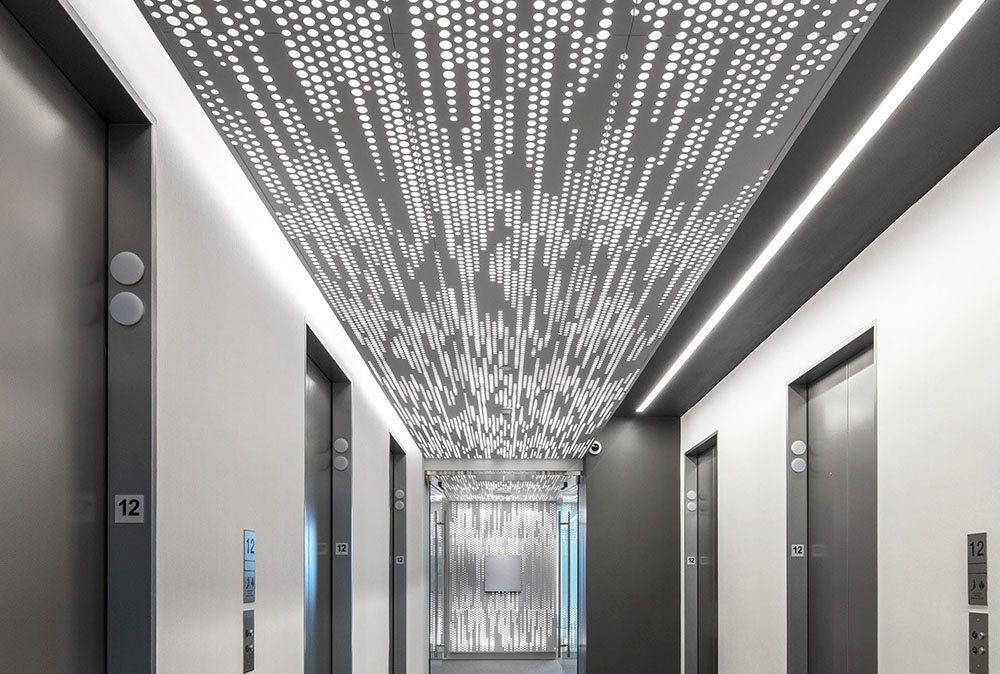In modern architecture and interior design, ceilings are no longer merely structural elements—they have become crucial canvases for enhancing aesthetics, improving acoustics, and optimizing environmental performance. Among a wide range of ceiling materials, perforated mesh has emerged as a transformative solution, combining the strength and durability of metal with the flexibility of innovative design. This article explores the multifaceted application direction of perforated mesh on ceilings, detailing its core advantages and value in different architectural scenarios.
1. Acoustic Optimization: The Sound Control Expert
One of the most critical performance indicators for ceiling materials in public and commercial buildings is acoustic control. Perforated mesh plays a central role in this domain by offering exceptional noise reduction and reverberation management.
When paired with sound-absorbing materials like mineral wool or acoustic foam behind the mesh, perforated panels with a hole diameter ranging from 0.8mm to 5mm can absorb over 90% of medium-to-high-frequency noise. This results in noise reduction levels of up to 25 decibels in spaces such as auditoriums, lecture halls, and open-plan offices. Moreover, adjusting the hole spacing and pattern allows designers to precisely manage reverberation time, keeping it within the ideal range of 0.8 to 1.2 seconds—much better than traditional gypsum board ceilings.
2. Light and Shadow Design: Aesthetic with a Purpose
Another unique strength of perforated mesh is its ability to manipulate light and create dramatic visual effects. With the rise of parametric design, architects are using perforated ceilings to introduce gradient perforations—from 1mm to 10mm—that scatter natural light into soft, organic patterns.
By customizing the mesh density (30% to 70%), the light transmittance of the ceiling can be tuned from 15% to 85%, allowing daylight to enter while reducing glare. This feature has been successfully used in performance venues such as the Shanghai Symphony Orchestra Concert Hall, where the mesh ceiling mimics the appearance of a starry sky while maintaining lighting efficiency.
3. Breathable Structure: Enhancing Ventilation and Accessibility
A breathable ceiling is essential for both energy efficiency and indoor air quality. The open structure of perforated mesh promotes air circulation, reducing HVAC energy consumption by up to 30%. This is especially valuable in healthcare, industrial, and commercial spaces, where proper airflow helps prevent mold buildup and regulates humidity levels.
In addition to airflow, perforated mesh ceilings offer easy access to hidden infrastructure such as ductwork, pipes, and electrical systems. This makes inspection and maintenance significantly easier and more cost-effective—up to 60% cheaper than maintaining closed ceiling systems.
4. Lightweight and Efficient Installation
The modular nature of perforated mesh allows for efficient, large-scale installation without compromising on strength. Lightweight materials such as aluminum reduce the panel weight to just 3.5kg/m²—approximately 65% lighter than conventional gypsum board. This light weight not only lowers the load on ceiling structures but also simplifies installation procedures.
Standard-sized panels (e.g., 600×600mm) can be installed rapidly, with a single technician capable of covering 200 square meters per day. This leads to a significant reduction in construction timelines and labor costs.
5. Versatile Application Scenarios
The adaptability of perforated mesh makes it suitable for a wide range of environments—from industrial to artistic. In medical cleanrooms, stainless steel mesh treated with antibacterial coatings can meet ISO 5 cleanliness standards. In museums, theaters, and galleries, copper perforated panels develop a unique green patina over time, adding a layer of visual storytelling. In commercial interiors, customized punching patterns—like geometric motifs or brand logos—enhance brand identity while serving functional purposes.
Performance Comparison: Why Perforated Mesh Stands Out
Compared to other ceiling materials, perforated mesh delivers superior all-around performance:
-
Noise Reduction: Up to 25 dB (vs. 8 dB for gypsum board and 15 dB for mineral wool panels).
-
Light Transmittance: Adjustable (15%-85%), unlike gypsum board (0%) and limited in mineral wool boards.
-
Durability: Service life over 25 years (vs. 5-10 years for other materials).
-
Maintenance: Easy to clean and maintain, unlike mineral wool which attracts dust and is difficult to clean.
-
Sustainability: 100% recyclable, aligning with green building standards.
HIGHTOP’s Comprehensive Ceiling Solution
As a leader in the architectural mesh industry, HIGHTOP delivers tailored perforated mesh ceiling solutions backed by high-precision manufacturing and reliable logistics:
-
Material Range: Aluminum, stainless steel, copper, galvanized steel (thickness: 0.6–5.0mm).
-
Custom Patterns: Circular, square, hexagonal, and artistic shapes with laser-cut accuracy of ±0.05mm.
-
Quick Turnaround: 100,000m² in stock and a 72-hour customization response. Smart warehousing ensures 12-hour delivery in major regions.
As the ceiling evolves from a passive structural element into an active contributor to comfort, energy efficiency, and design, perforated mesh has become the material of choice for architects and designers seeking innovation without compromise. Whether applied in art halls, cleanrooms, or retail spaces, it offers unmatched performance across acoustics, aesthetics, and sustainability.
Choosing perforated mesh—especially from HIGHTOP—means elevating your ceiling design into a functional masterpiece that breathes, glows, and speaks.
Request a Quote
Please email us via the contact form below, we will get back to you as soon as possible.











